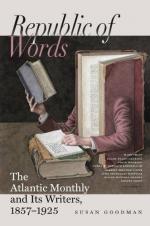The strangers would have been very blind strangers, if they had not been more influenced by the actions of the Charlestonians than by their words. The original information was given on May 25th. The time passed, and the plot failed on June 16th. A plan for its revival on July 2d proved abortive. Yet a letter from Charleston in the “Hartford Courant” of August 6th, represented the panic as unabated: “Great preparations are making, and all the military are put in preparation to guard against any attempt of the same kind again; but we have no apprehension of its being repeated.” On August 10th, Governor Bennett wrote the letter already mentioned, which was printed and distributed as a circular, its object being to deprecate undue alarm. “Every individual in the State is interested, whether in regard to his own property or the reputation of the State, in giving no more importance to the transaction than it justly merits.” Yet five days after this,—two months after the first danger had passed,—a reinforcement of United States troops arrived at Port Moultrie. And during the same month, several different attempts were made by small parties of armed negroes to capture the mails between Charleston and Savannah, and a reward of two hundred dollars was offered for their detection.
The first official report of the trials was prepared by the Intendant, by request of the city council. It passed through four editions in a few months,—the first and fourth being published in Charleston, and the second and third in Boston. Being, however, but a brief pamphlet, it did not satisfy the public curiosity, and in October of the same year, (1822,) a larger volume appeared at Charleston, edited by the magistrates who presided at the trials, Lionel H. Kennedy and Thomas Parker. It contains the evidence in full, and a separate narrative of the whole affair, more candid and lucid than any other which I have found in the newspapers or pamphlets of the day. It exhibits that rarest of all qualities in a slave-community, a willingness to look facts in the face. This narrative has been faithfully followed, with the aid of such cross-lights as could be secured from many other quarters, in preparing the present history.




